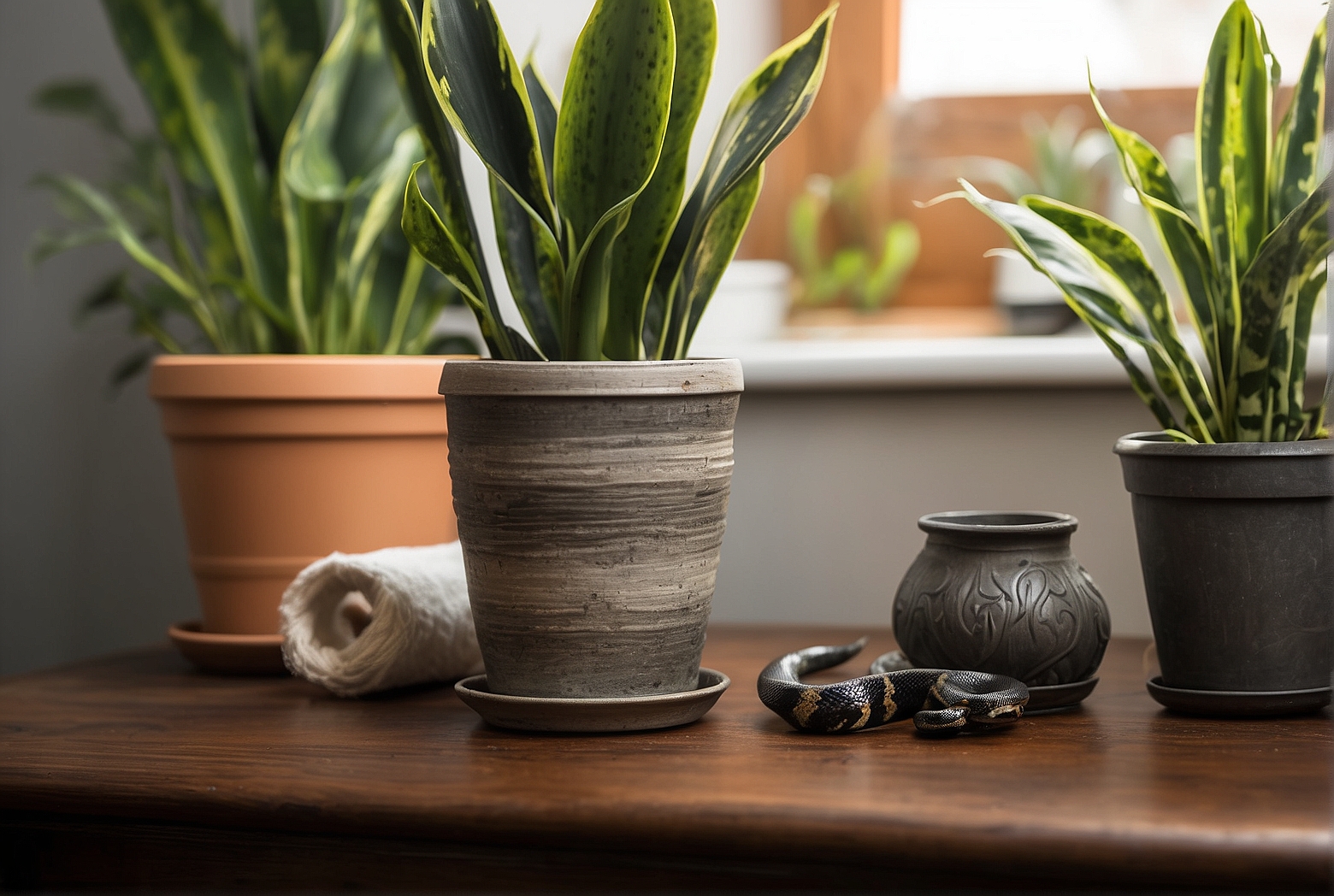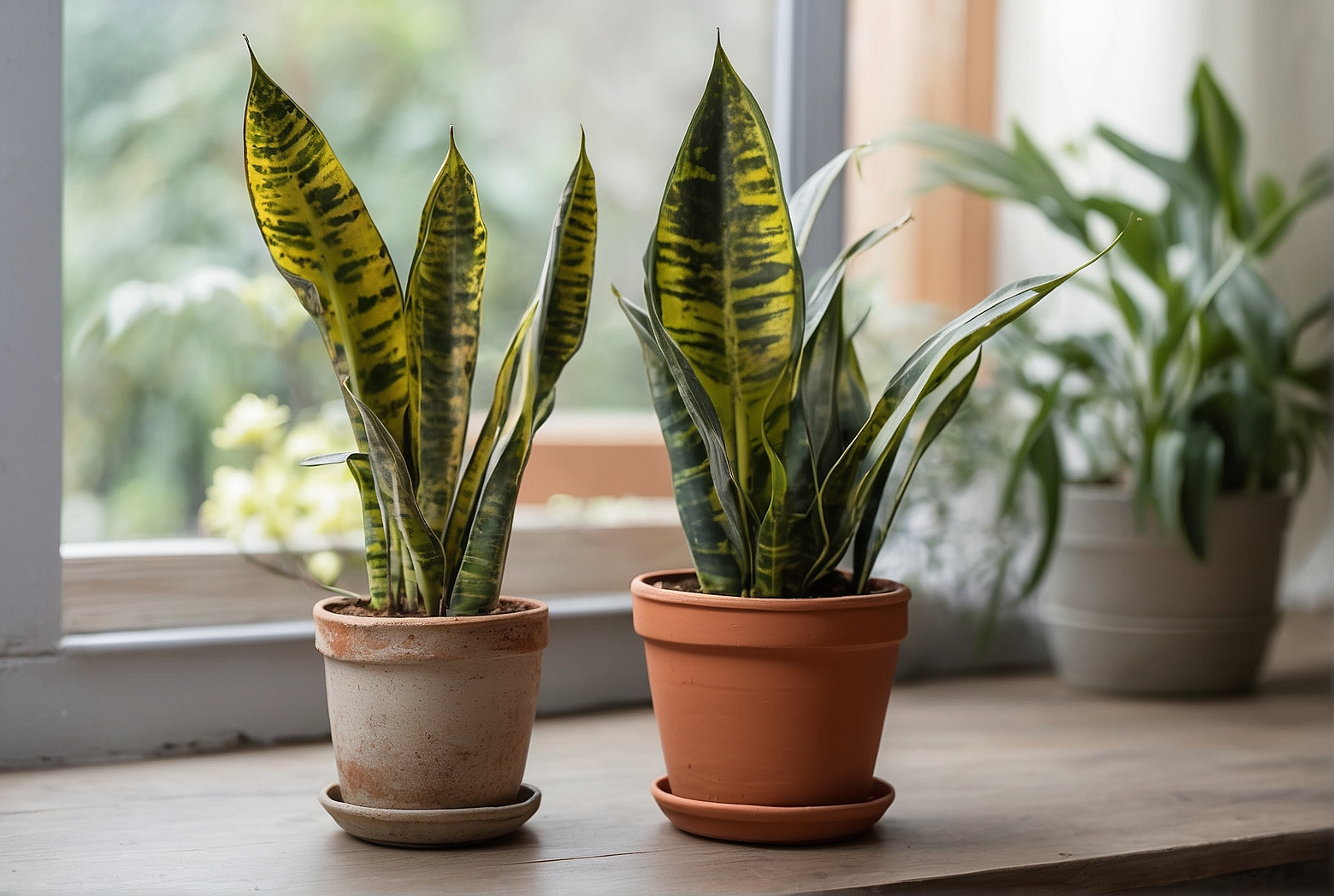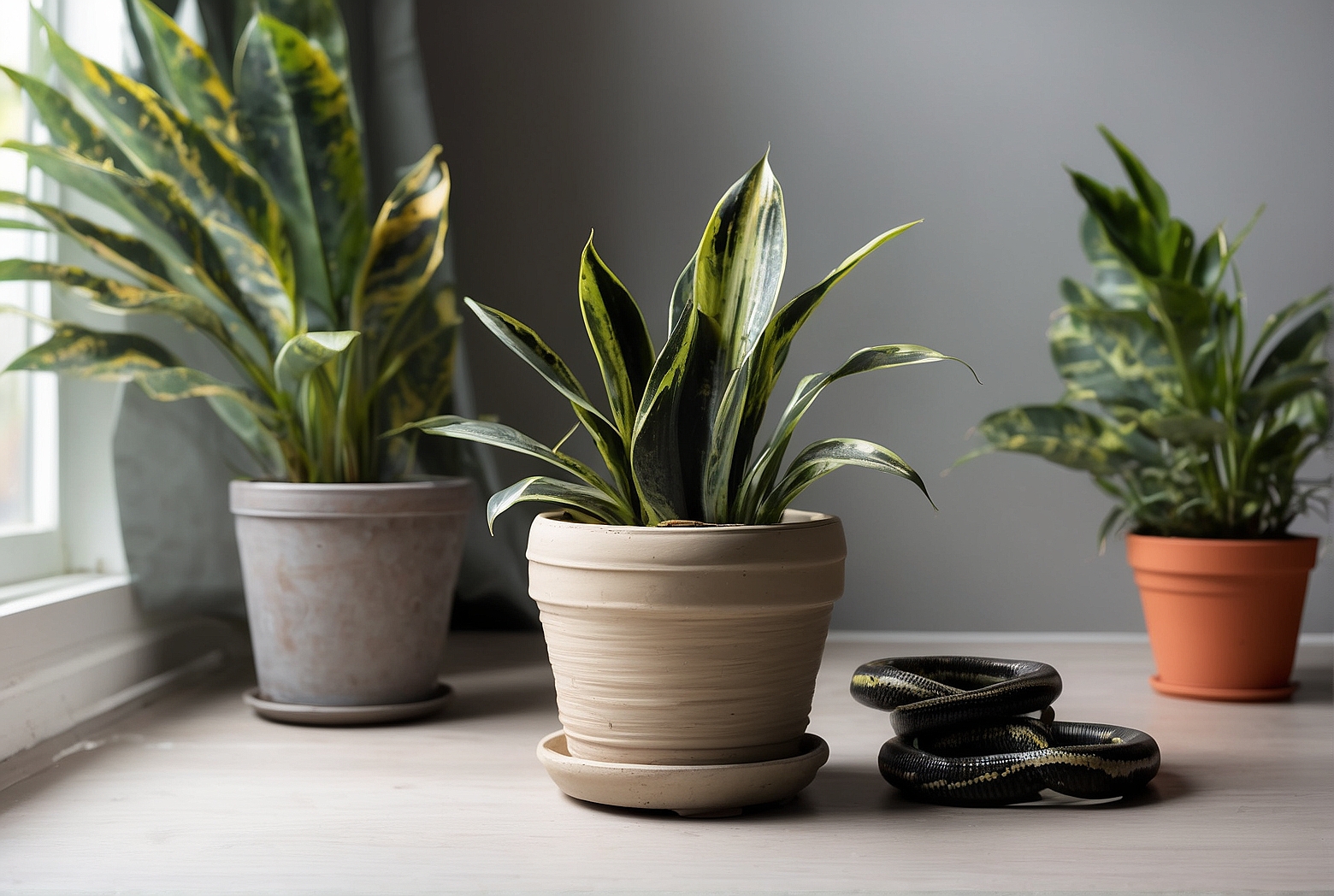Last Updated on April 18, 2024 by Tony Manhart
So you’ve noticed that your snake plant isn’t looking as healthy as it once was and now you’re wondering what could be causing its decline. Don’t worry, you’re not alone in this predicament! Many snake plant owners have faced this issue and have been left perplexed as to why their once thriving plant is now struggling. In this article, we will explore some common reasons why snake plants may be dying, providing you with valuable insights and practical tips to help revive your beloved green companion. Together, we’ll uncover the secrets behind rescuing your snake plant and bringing it back to its vibrant and flourishing self.
Watering Issues
Overwatering
Overwatering is a common issue when it comes to caring for indoor plants, including snake plants. When you overwater your snake plant, the roots become saturated, leading to poor oxygen levels in the soil. This lack of oxygen can cause root rot, which is a serious condition that can ultimately lead to the death of your plant. Signs of overwatering include yellowing leaves, soft and mushy roots, and a foul odor coming from the soil.
To avoid overwatering your snake plant, ensure that you are letting the soil dry out completely between waterings. This means waiting until the top inch or so of soil is dry before giving your plant a thorough watering. It’s also important to choose a well-draining potting mix and a pot with drainage holes to allow excess water to escape.
Underwatering
On the other hand, underwatering can also be detrimental to the health of your snake plant. If you consistently forget to water your plant or if you only water it infrequently, it can lead to dehydration and nutrient deficiencies. Signs of underwatering include wrinkled and wilting leaves, brown and crispy leaf tips, and a generally weak and droopy appearance.

To prevent underwatering, make sure to establish a regular watering schedule for your snake plant. While snake plants are more tolerant of drought compared to other houseplants, they still require regular watering to thrive. Check the moisture levels of the soil regularly by inserting a finger into the soil. If it feels dry, it’s time to give your snake plant a drink. However, avoid overcompensating and giving it too much water, as that can lead to overwatering issues.
Lighting Problems
Insufficient Light
Snake plants are known for being quite adaptable to various lighting conditions, but they still need a sufficient amount of light to thrive. If your snake plant is not receiving enough light, it can exhibit stunted growth, thin and weak leaves, and a general decline in overall health.
To ensure your snake plant is getting enough light, place it in a bright location near a window where it can receive indirect sunlight. If your snake plant is not receiving adequate natural light, consider supplementing with artificial grow lights. These can provide the necessary levels of light to keep your plant healthy and thriving.
Excessive Light
While snake plants can tolerate a wide range of lighting conditions, exposing them to excessive direct sunlight can be detrimental. Too much direct sunlight can scorch the leaves of your snake plant, resulting in yellow or brown patches and a weakened, stressed plant.

To protect your snake plant from excessive light, place it in an area where it can receive bright, indirect light. If your plant is exposed to direct sunlight, consider moving it to a spot with filtered or diffused light. This will prevent sunburn and ensure the longevity of your snake plant.
Temperature and Humidity
Extreme Temperatures
Snake plants thrive in average room temperatures ranging from 60-85°F (15-29°C). Exposure to extreme temperatures can cause stress and damage to your plant. Cold drafts or proximity to heating vents can result in leaf discoloration, leaf curling, and even death in severe cases.
To maintain a suitable temperature range for your snake plant, avoid placing it near drafty windows or doors. Additionally, keep it away from heat sources such as radiators or space heaters. Maintaining a stable temperature will help your snake plant thrive and stay healthy.
Low Humidity
While snake plants are relatively tolerant of low humidity levels, excessively dry air can still impact their health. In low humidity environments, snake plants may exhibit brown tips, dry leaf edges, and overall diminished vitality.
To increase humidity levels around your snake plant, consider using a humidifier or placing a tray of water near the plant. Misting the leaves occasionally can also provide a temporary boost in humidity. By ensuring the air around your snake plant is moderately humid, you can prevent potential issues caused by excessively dry conditions.
Potting and Soil
Wrong Pot Size
Choosing an appropriately sized pot is crucial for the health of your snake plant. If the pot is too small, the roots may become root-bound, leading to restricted growth and nutrient deficiency. Conversely, if the pot is too large, the excess soil can retain too much moisture, increasing the risk of overwatering and root rot.
When repotting your snake plant, select a pot that is only a couple of inches larger in diameter than its current pot. This will allow the roots to have room to grow while maintaining a balanced moisture level. Remember to choose a pot with drainage holes to promote good drainage and prevent water from pooling at the bottom, which could also lead to root issues.
Poor Drainage
Good drainage is vital for snake plants, as they prefer slightly dry soil between waterings. If your pot lacks drainage holes or if the soil is not well-draining, your snake plant may experience waterlogged roots and subsequent root rot.
To ensure proper drainage, choose a pot with drainage holes and use a well-draining potting mix. A mix containing perlite or sand can help improve drainage and prevent excess moisture retention. Additionally, periodically check the drainage holes to ensure they are not blocked by soil or debris.
Inadequate Soil
The type of soil used for your snake plant can greatly impact its health and growth. Snake plants thrive in a soil mix that provides good drainage while retaining enough moisture for the roots. Using heavy, compacted soil or a mix that retains too much water can lead to root rot and other issues.
When potting or repotting your snake plant, consider using a well-draining succulent or cactus potting mix. These mixes typically contain a blend of organic materials such as peat or coco coir, along with perlite or sand for improved drainage. This combination will help create an ideal soil environment for your snake plant to flourish.
Nutrient Deficiency
Lack of Essential Nutrients
Like all plants, snake plants require essential nutrients to survive and thrive. A lack of nutrients can result in stunted growth, weak foliage, and overall poor health. Common nutrient deficiencies in snake plants include nitrogen, iron, and potassium.
To ensure your snake plant has access to the necessary nutrients, consider using a balanced fertilizer specifically designed for houseplants. Follow the instructions on the fertilizer packaging for proper application and frequency. Additionally, periodically check the soil pH and adjust if necessary, as imbalanced pH levels can affect nutrient availability.
Imbalance in Nutrient Levels
While ensuring your snake plant has adequate nutrients is important, it’s equally crucial to avoid overfeeding or overfertilizing. Over time, an imbalance in nutrient levels can cause toxicity, leading to leaf discoloration, stunted growth, and reduced vitality.
Always follow the recommended dosage and frequency instructions provided with your chosen fertilizer. Avoid overfertilizing out of the belief that more is better. Proper fertilization, along with a healthy watering and care routine, will provide the right balance of nutrients for your snake plant’s well-being.
Pests and Diseases
Spider Mites
Spider mites are common pests that can infest snake plants. These tiny, sap-sucking insects often go unnoticed until significant damage has been done. Look out for stippling, webbing, and yellow or brown spots on the leaves as indications of a spider mite infestation.
To combat spider mites, isolate the affected plant and wipe the leaves gently with a damp cloth to remove any visible mites and webs. You can also use insecticidal soap or neem oil spray to further control the infestation. Be sure to treat both the tops and undersides of the leaves, as this is where spider mites often reside.
Mealybugs
Mealybugs are another common pest that can affect snake plants. These soft-bodied insects feed on plant sap and can cause leaf yellowing, wilting, and stunted growth. Look for white, cotton-like clusters or sticky residue on the foliage as signs of a mealybug infestation.
To eliminate mealybugs, remove them manually using a cotton swab dipped in rubbing alcohol or a mixture of water and dish soap. For larger infestations, consider using insecticidal soap or neem oil spray. Regularly inspect your snake plant to catch any signs of mealybugs early and take appropriate action.
Root Rot
Root rot is a serious condition caused by overwatering or poorly draining soil. It can lead to decay and death of the plant’s roots, often resulting in yellowing leaves, wilting, and an overall decline in the plant’s health.
To prevent root rot, ensure that you are using a well-draining potting mix and a pot with drainage holes. Allow the soil to dry out partially between waterings, and do not let the plant sit in standing water. If root rot has already set in, try to salvage the healthy parts by removing the affected roots and replanting the snake plant in fresh, well-draining soil.
Improper Care
Neglecting Pruning
Pruning plays a vital role in maintaining the health and appearance of your snake plant. Neglecting to trim away dead or discolored leaves can lead to the spread of disease and hinder the growth of new foliage.
Regularly inspect your snake plant and remove any yellow, brown, or withered leaves with clean and sharp pruning shears. It’s important to sanitize the pruning shears before and after each use to prevent the potential spread of pathogens. Pruning not only promotes the overall aesthetic of the plant but also stimulates new growth and improves its overall health.
Using Harmful Chemicals
Using harmful chemicals, such as pesticides or household cleaning products, near your snake plant can have detrimental effects on its health. These chemicals can be absorbed through the leaves or roots, causing damage or even death.
When caring for your snake plant, opt for natural and organic methods to control pests and maintain cleanliness. For example, insecticidal soaps, neem oil, or homemade solutions made with vinegar or mild dish soap can effectively address pest issues without harming your plant. Always read product labels carefully and follow instructions for any substances used around your snake plant.
Environmental Factors
Air Pollution
Air pollution, both indoor and outdoor, can have negative effects on the health of your snake plant. Pollutants in the air, such as dust, chemicals, and smoke, can accumulate on the leaves, blocking sunlight and inhibiting the plant’s ability to photosynthesize effectively.
To minimize air pollution effects, periodically wipe the leaves of your snake plant with a damp cloth to remove dust and debris. Additionally, placing the plant in an area with good air circulation or using an air purifier can help reduce the impact of pollutants and enhance the overall health of your snake plant.
Toxic Substances
Exposure to toxic substances can be harmful to your snake plant. Household chemicals, such as bleach, ammonia, or certain cleaning agents, can cause leaf discoloration, wilting, and even plant death if they come into contact with the foliage or soil.
When using any substances around your snake plant, ensure that they are non-toxic and safe for houseplants. Consider using environmentally friendly alternatives or natural cleaning solutions to minimize the risk of accidental exposure to harmful substances.
Age and Natural Decline
Natural Aging Process
Like all living organisms, snake plants go through a natural aging process. As they age, the leaves may become yellow or develop brown tips, and the overall growth rate may slow down. This is considered normal and does not necessarily indicate a problem.
To maintain the health of your aging snake plant, it’s important to continue providing it with proper care, including appropriate watering, lighting, and nutrition. Regularly remove any dead or dying leaves to maintain a neat appearance, and be patient as your snake plant adjusts to its natural aging process.
Reached Its Lifespan
Snake plants have a reasonably long lifespan, but they do eventually reach a point where they become weak, less vigorous, and more susceptible to diseases. If your snake plant has received proper care throughout its life and is exhibiting significant decline despite your efforts, it may have reached the end of its natural lifespan.
In such cases, it may be best to accept the inevitable decline and consider propagation to preserve the legacy of your snake plant. Taking cuttings from healthy portions of the plant and propagating them in fresh soil can result in new, healthy snake plants that can continue to bring joy to your space.
Propagation or Transplant Stress
Shock from Repotting
Repotting or transplanting can cause stress to your snake plant, often resulting in temporary wilting, leaf drooping, or slowed growth. This shock is a normal response as the plant adjusts to its new environment and develops new roots.
To minimize transplant stress, choose an appropriate pot and use a well-draining potting mix. When repotting, ensure that you do not damage the roots excessively. After repotting, provide your snake plant with a stable environment, including appropriate lighting, temperature, and watering, to aid in its recovery and adjustment.
Unsuccessful Propagation Attempts
Propagation is an exciting process to create new snake plants, but it doesn’t always go as planned. Sometimes, despite our best efforts, propagation attempts can fail, resulting in a loss of potential new plants.
If your propagation attempts are unsuccessful, try not to be discouraged. Assess the reasons for failure, such as improper care, unsuitable cutting conditions, or diseases, and make adjustments for future attempts. With perseverance and attention to detail, you can increase your chances of successfully propagating your snake plant and enjoying the rewards of expanding your plant family.
In conclusion, snake plants, like any living organism, can face various challenges that can impact their health and ultimately lead to their decline. By understanding and proactively addressing common issues such as watering, lighting, temperature, soil, nutrients, pests, diseases, and environmental factors, you can ensure the longevity and well-being of your snake plants. Remember, proper care, regular monitoring, and adjustment to your plant’s needs are the keys to keeping your snake plants healthy, vibrant, and thriving for years to come.
Tony Manhart is a passionate gardener who has been tending to gardens for over 20 years. He takes pride in creating beautiful outdoor spaces with plants, trees, and shrubs that can thrive in any environment. He loves to share his knowledge with others and has taught classes on gardening basics and advanced techniques. He is committed to sustainability, using natural and organic methods to create and maintain gardens. He also works with local organizations to create green spaces for communities. When he’s not gardening, Tony enjoys hiking, reading, and spending time with his family.


